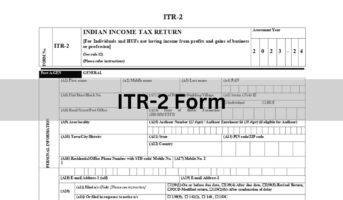The Goods and Services Tax (GST) tax system began operating on July 1, 2017, and is governed by the GST Council of India. It introduces a significant amount of change to the indirect tax structure. This central tax is charged on almost all items and services in the nation including furniture, with a few notable exceptions.
GST rates for different types of furniture materials
Every category of furniture material is associated with a specific Goods and Services Tax (GST) rate, significantly impacting the economic aspect of our households. Let’s delve into the particulars of these rates and examine their effects on the pricing and accessibility of the furniture we introduce to our living areas. Below is a table presenting the GST rates for various types of furniture materials:
| Furniture Material | GST Rate | Popular Options | Advantages | GST Impact |
| Wood | 12% (28% for plywood) | Solid wood (mahogany, oak, teak), Engineered wood (MDF, plywood), Bamboo | Durability, natural beauty, eco-friendly options, classic appeal | Generally attracts lower GST (but plywood taxed at 28%) |
| Plastic | 12% (may vary) | Polyethylene, Polypropylene, PVC | Lightweight, affordability, low maintenance, variety of styles and colours | Generally falls under standard 12% GST; May vary based on plastic-type and upholstery |
| Metal | 18% | steel, aluminium, Iron, wrought iron | Durability, Industrial style, weatherproof, lightweight | Budget-friendly depending on design,
Higher GST rate than wood; |
| Glass | 28% | Safety glass, Tempered glass, frosted glass | Space-enhancing, Modern look and used for shelves, tables, accents, etc | Highest GST rate among common materials |
| Upholstery | 18% (unless base material has already been classified as upholstered) | Leather, fabric, synthetic leather | Style, comfort, personalisation | Adds 18% GST if the base material isn’t already classified as upholstered |
Wooden furniture GST rate applicable
If you are in the business of producing furniture, you will be required to pay GST on an individual basis for each material that you acquire. Under the Goods and Services Tax (GST) system, the relevant tax rate for completed wooden furniture is 12%. Plywood is often used in the construction of wooden furniture. When it comes to plywood, the GST, which is now in effect, is 28%, which is far more than the previous VAT rate of 5 or 6%. The high cost of the GST on plywood has resulted in an increase in the price of wooden furniture. Companies that produce furniture out of wood may claim an input tax credit (ITC) on the GST paid for plywood.
| Particulars | GST on Furniture | VAT |
| Wood in the form of chips, sawdust, and wood waste | 5% | Average 4-5% |
| Wooden furnishings and ornaments, including tableware and kitchenware | 12% | Average 12.5% |
| Wood pulp and bamboo pulp | 12% | Average 4-5% |
| Wood used to manufacture umbrellas, walking sticks, wooden boxes, drums, and tool handles, among other related products. | 12% | Average 4-5% |
| Residual lyes from wood pulp production; chemically treated wood, containing lignin sulfonates (excluding tall oil) | 18% | Average 4-5% |
| Wood tar, vegetable pitch, wood naphtha, brewers’ pitch, wood tar oils; wood preparations derived from resin, resin acids, or vegetable pitch and wood creosote. | 18% | Average 4-5% |
| Fiber wood, plywood, and laminated wood, as well as materials that resemble wood or are woody in character. | 28% | Plywood 5-6%
Others Average 12.5% |
| Cane furniture | 28 % | Average 4-5% |
| Wood charcoal or firewood | Exempt | Exempt |
After applying these rates, you will be able to establish the prices of your items in accordance with the requirements imposed by the government. Keep a close check on the claims that are legally permissible for you to submit.
Iron and steel furniture manufacturer
Under GST, except wooden furniture, all other types of furniture are subject to a 28% tax. In contrast to the ordinary VAT rate of 5%, iron and steel will be subject to an 18% GST, regardless of the iron or steel’s characteristics. ITC is provided to producers at the rate of 18% of iron or steel imported under GST.
Example
A bought a steel almirah from XYZ furniture for Rs 50,000. A substantial division of XYZ furniture is dedicated to creating iron and steel furniture exclusively. XYZ had acquired and used steel worth Rs 30,000 for the furniture construction.
Taxable status:
VAT
| Particulars | Amount |
| Applicable VAT on the Table (X) | Rs 6,250 (12.5% of Rs 50,000) |
| Available ITC on raw materials (Y) | Rs 1,250 (5% of Rs 25,000) |
| Total Tax Liability (X-Y) | Rs 5,000 |
GST
| Particulars | Amount |
| Applicable GST on the table (X) | Rs 14,000 (28% of Rs 50,000) |
| Available ITC on raw materials (Y) | Rs 4,500 (18% of Rs 25,000) |
| Total tax liability (X-Y) | Rs 9,500 |
Effect of GST on furniture industry
When compared to the VAT tax rates, the tax rate on wood, iron, and steel under the GST is much greater. The price of the furniture that is constructed using these materials has gone up as a direct result. When compared to the tax burden associated with the production of wood, the tax liability associated with the production of steel and iron is substantially larger. It is safe to argue that makers of wooden furniture gain more under the Goods and Services Tax (GST) system than manufacturers of iron and steel furniture do.
FAQs
How does GST impact the affordability of furniture?
GST directly affects the cost of furniture. Knowing the applicable rates helps consumers choose materials that align with their budget and preferences.
Why is it important to know GST rates on furniture?
Understanding GST rates on furniture is crucial for budget planning, making informed purchasing decisions, and ensuring compliance with tax regulations.
Is GST applicable to both online and offline furniture purchases?
Yes, GST is applicable to both online and offline furniture transactions. The same tax rules apply regardless of the purchasing platform.
What are the different GST rates for furniture materials?
GST rates vary for different materials. For example, wood attracts 12%, metal is at 18%, plastic generally at 12%, upholstery at 18%, and glass at 28%.
Does GST vary for customised furniture?
No, GST rates for customised furniture are the same as for ready-made furniture. The rates are determined by the material used and its classification.
What is GST?
GST, or Goods and Services Tax, is a unified indirect tax introduced in India in 2017, replacing various pre-existing taxes. It applies to the supply of goods and services across the country.
Are there any exemptions for GST on furniture?
Generally, there are no specific exemptions for GST on furniture. However, specific items may be taxed at lower rates based on their classification.

Dhwani is a content management expert with over five years of professional experience. She has authored articles spanning diverse domains, including real estate, finance, business, health, taxation, education and more. Holding a Bachelor’s degree in Journalism and Mass Communication, Dhwani’s interests encompass reading and travelling. She is dedicated to staying updated on the latest real estate advancements in India.
Email: dhwani.meharchandani@housing.com











